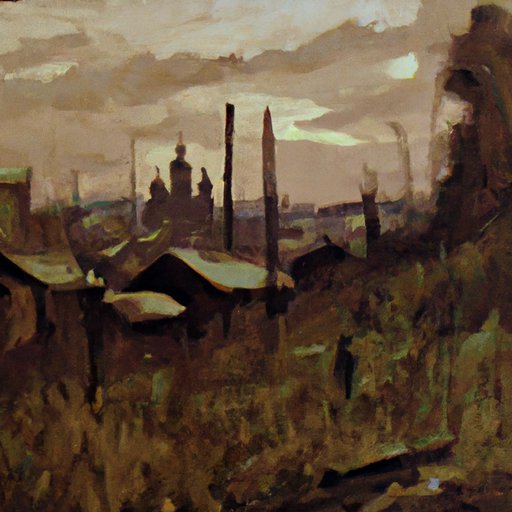Introduction
Realism is an artistic movement that emerged in the mid-19th century, characterized by an emphasis on depicting everyday life in a realistic manner. It is associated with the rise of industrialization, which radically changed the nature of work and society. In this article, we will explore how realism reflected the culture of the industrial age and how it shaped the art and literature of the period.

Influence of Industrialism on Realist Art
Industrialization had a profound impact on the nature of art. As the economy shifted from agriculture to industry, the focus of art shifted away from depicting the idealized world of aristocratic life and towards the realities of everyday life. This was reflected in the rise of realism, which sought to capture the mundane aspects of everyday life through its depictions of ordinary people and scenes.
One example of this shift can be seen in the work of French artist Gustave Courbet. He rejected the traditional academic style of painting, instead focusing on depicting the everyday life of the working-class people he encountered in his native Ornans. His most famous work, The Stonebreakers (1849), portrays two peasant laborers breaking rocks in a barren landscape. It was a stark departure from the idealized scenes of rural life favored by Academic painters, and it established Courbet as a pioneer of the realist movement.
Representation of Working-Class Life in Realist Literature
Realism also had a profound impact on literature. Novels such as Émile Zola’s L’Assommoir (1877) and George Eliot’s Middlemarch (1871-72) explored the lives of the working class, depicting their struggles and hardships in vivid detail. These works provided readers with an insight into the harsh realities of life in the industrial age.
Realist literature also served as a vehicle for social critique. Authors such as Charles Dickens used their works to highlight the injustices of the industrial age and to call for social reform. His novel Hard Times (1854) criticized the dehumanizing effects of industrialization, while his later works, such as Little Dorrit (1855-57), explored the plight of the urban poor in Victorian England.

Relationship Between Realism and Social Criticism
Realism was not just a means of representing reality; it was also a tool for social criticism. Artists and writers used the genre to challenge the status quo and to draw attention to the injustices of the industrial age. For example, Honoré Daumier’s lithograph Rue Transnonain (1834), depicting the aftermath of a massacre of working-class people by government troops, was a powerful statement against political repression.
Realist literature also had a powerful effect on public opinion. Novels such as Uncle Tom’s Cabin (1852) by Harriet Beecher Stowe were instrumental in raising awareness of the issue of slavery and galvanizing public support for abolition.

Impact of Technological Advances on Realist Painting
The advent of new technologies in the 19th century also had a significant impact on realism. Photographic processes enabled painters to achieve unprecedented levels of detail and accuracy in their works. Detail that had previously been impossible to achieve with a brush could now be achieved with a camera, allowing for a more realistic representation of the world. This was a particularly important development for realist painters, who sought to capture the gritty details of everyday life.
One example of this is the work of French painter Jean-François Millet. His paintings, such as The Gleaners (1857), depict rural scenes with a heightened level of detail and accuracy. This was made possible by the introduction of photography, which allowed painters to study and replicate the minute details of their subjects.
Comparison of Realism to Other Art Movements of the Industrial Age
Realism was the dominant aesthetic of the industrial age, but it was not the only one. Other movements, such as Impressionism and Naturalism, also emerged during this period. While all three movements sought to depict reality in some way, there were distinct differences between them.
Realism was more focused on capturing everyday life and the struggles of the working class, while Impressionism favored a more free-flowing, abstract approach to painting. Naturalism, meanwhile, sought to depict the Darwinian struggle for survival in the animal kingdom. All three movements played an important role in shaping the visual culture of the industrial age.
Conclusion
Realism was a major artistic movement during the industrial age, reflecting the changes in culture and society brought about by technological advances. It sought to capture the mundane details of everyday life, as well as to challenge the status quo and call for social reform. Realism influenced the art and literature of the period, and its legacy continues to be felt today.
(Note: Is this article not meeting your expectations? Do you have knowledge or insights to share? Unlock new opportunities and expand your reach by joining our authors team. Click Registration to join us and share your expertise with our readers.)
